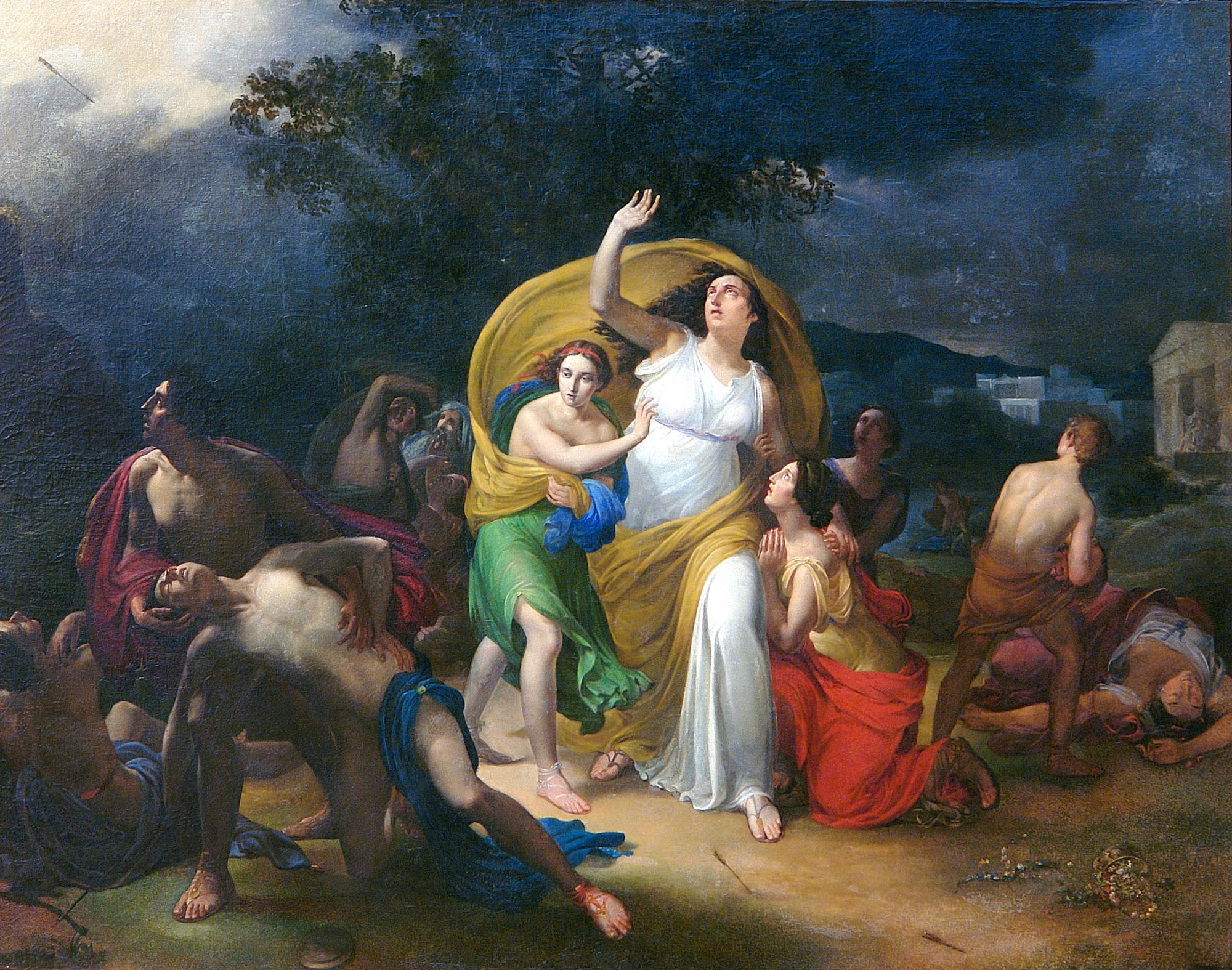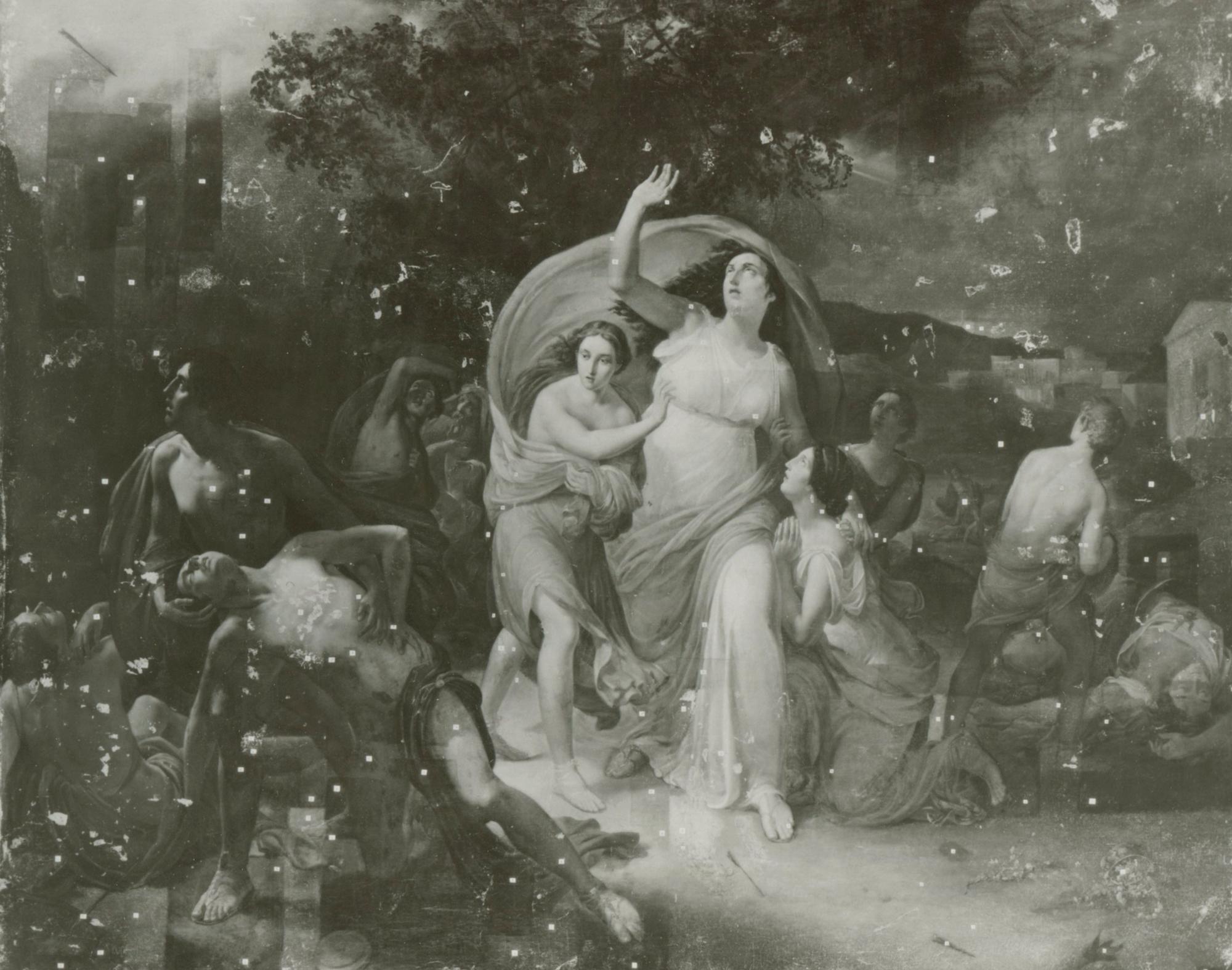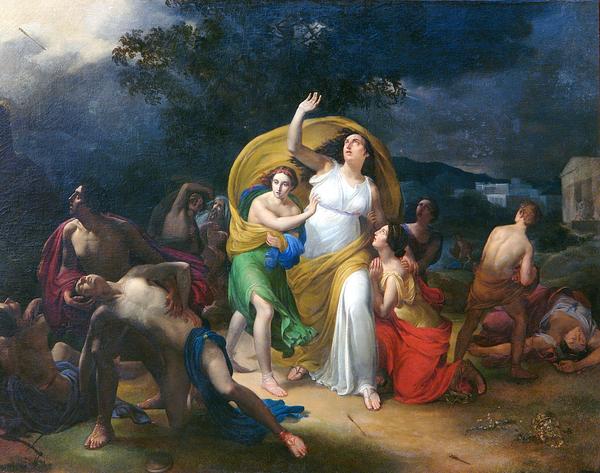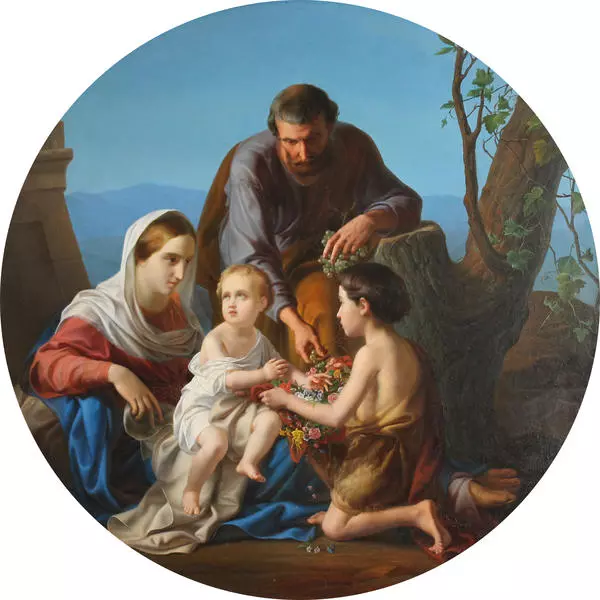Pyotr Shamshin painted The slaying of Niobids in 1836. The scene is based on the mythical story of Niobe, queen of the city of Thebes. She had seven sons and seven daughters and was so proud of them that she praised herself above Leto the goddess, who only had a son and a daughter — Artemis and Apollo. When people of the city assembled for a sacrificial celebration in honor of Leto, Niobe refused to leave her offering and incurred a terrible punishment: the goddess ordered her own children to kill all of the Niobe’s offspring. Under the hail of arrows sent by gods none of them survived. The queen petrified with grief and remained a stone statue forever. The painter pictured the most dramatic moment of the myth: the unfortunate Niobe attempting in vain to shield her daughters from arrows.
1 / 3
The slaying of Niobe's children
Время создания
1836
Размер
140x178 cm
Техника
oil on canvas
Коллекция
18
Открыть в приложении#1
Pyotr Shamshin
The slaying of Niobe’s children
#2
#5
Pyotr Shamshin painted this canvas following the rules of Classicism. He reproduced human anatomy features typically found in antique art: all his characters have perfect body proportions. Coloration of the painting is based upon the primary colors — red, yellow and blue, which are the source of all other shades. As Francesco Milizia, Italian scholar of Classicism art, put it, Systematic agreement consists in the balance of these three colors.
The characters as well as their clothes are painted in pure — or local — colors. A local color is the natural color of an object, which is not distorted by reflections from other objects. Here, for example, the white of Niobe’s dress is not affected at all by the bright clothes of her children — there are neither undertones in the shades nor overtones in lighted parts. Such object-in-object reflections were unacceptable In Classicism painting.
The characters as well as their clothes are painted in pure — or local — colors. A local color is the natural color of an object, which is not distorted by reflections from other objects. Here, for example, the white of Niobe’s dress is not affected at all by the bright clothes of her children — there are neither undertones in the shades nor overtones in lighted parts. Such object-in-object reflections were unacceptable In Classicism painting.
#7
Peter the Great in the storm at Lakhta, 1844. Source: wikipedia.org
From an early age, Pyotr Shamshin was taught painting in accordance with the canons of Classicism and Romanticism. At the age of ten, he entered the Primary School at the Imperial Academy of Art. The slaying of Niobids won him the Grand Gold Medal when he was only 25. Later, having created Hagar in the desert and Peter the Great in the storm at Lakhta, he was named Academician.
#8
From then on, Shamshin mostly dedicated himself to temple painting; his icons and wall-size paintings can still be seen in a number of churches in Russia, Georgia and other countries.From then on, Shamshin mostly dedicated himself to temple painting; his icons and wall-size paintings can still be seen in a number of churches in Russia, Georgia and other countries.
#9
Yaroslavl Art Museum
читать дальшескрыть
00:00
00:00
1x
The slaying of Niobe's children
Время создания
1836
Размер
140x178 cm
Техника
oil on canvas
Коллекция
18
Открыть в приложении
Поделиться








